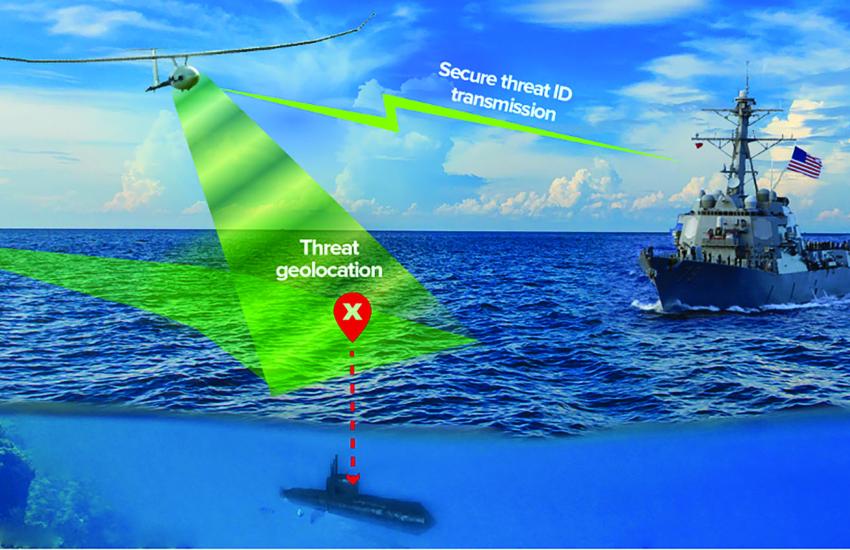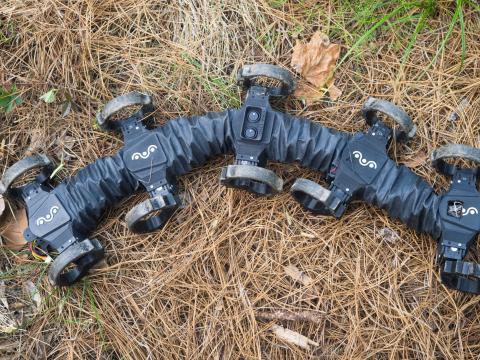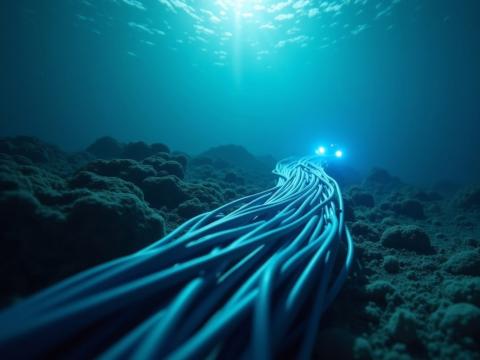A Submarine Attraction

For generations, sound navigation and ranging, commonly known as sonar, has been predominantly used for underwater object detection. Revolutionary technology has turned the tide for military robustness, however. A new era of submarines is built to be practically silent, opening doors for scientific minds to help the U.S. Navy meet its demands.
One such mind is Todd Jennings, research scientist at Charles River Analytics (CRA). Jennings received his Ph.D. in biomedical engineering at Boston University with a focus on biological signal sensory processing. During his studies, he additionally devoted a significant amount of time to machine learning and computer vision signal processing.
“Now I’m trying to apply those techniques and some of what I’ve learned about how animals and humans process sensory data to the application of sensory processing for computers and robots and drones and things like that,” he stated in an interview with SIGNAL Media.
Jennings is currently the principal investigator for MAGNETO, a magnetometer-based anti-submarine warfare guidance for naval enhancement of tactical operations.
“The Navy is currently evaluating this technology to assess its effectiveness and potential for future operational use,” a U.S. Navy spokesperson told SIGNAL Media in an email.
The project, funded by the Small Business Innovation Research and awarded by the U.S. Navy, was within Phase 2 of its progress at the time of the interview. Its total award amount is just under a million dollars, with an award end date of April 30, 2026.
“Earth has a magnetic field mostly due to currents in Earth’s core,” Jennings said, beginning to explain the complexities of the innovation. As liquid iron C, which primarily makes up the Earth’s outer core, rotates around the globe, it generates a magnetic field around Earth. “As a metal object moves through that magnetic field, it distorts it and changes it in characteristic, predictable ways,” he proceeded.
As submarines become virtually silent, they create an emerging challenge for operators and decision-makers. “You can use active sonar to detect [them,] but that gives away your position,” Jennings explained. Detecting submarines while going unnoticed is increasingly difficult.
“You can make a submarine silent, quieter, but it’s still going to have to be made of metal,” he went on. “So, no matter how hard you try, you’re never going to make it so it won’t disturb Earth’s magnetic field as you pass over it.”
Hence, the idea of a flying magnetic sensor to detect distortions and thereby identify hidden submarines. A simple idea in theory but one that is much easier said than done, Jennings explained.
“There’s several problems,” he said. First, the magnetic signal is extremely noisy. “The aircraft that [the sensor] is going to be flying on, whether it’s crewed or uncrewed aircraft, is made of metal as well. It’s got a motor, which has electrical signals in it; it has electronics.”
Another challenge is posed by constant changes in the magnetic field, caused by fluctuations in Earth’s core, Earth’s mantle, fluctuations in space, in the ionosphere and even solar weather. “Even the waves in the ocean, because the water is conductive, currents and waves in the ocean cause noise,” Jennings continued.
Creating even more room for complexity, deep water also contains other objects, such as undersea cables, discarded containers from container ships, regular boats, vessels and so on. Such items may be even more difficult to detect due to the weather, Jennings said.
“Being able to isolate this noise and tell the submarine apart from another object you could encounter in the water makes it a very practically difficult problem to solve,” he stated. And while degaussing techniques, which reduce the magnetic field, have improved, the signal on submarines has also gotten smaller. Due to its level of difficulty, the use of magnetic sensors has declined over time, Jennings explained.
Quieter submarines have called for alternative methods of detection, however, which is where MAGNETO comes in, a capability created for Navy use. “We have a tool called our VIBE workbench,” Jennings said, referring to CRA’s Vector Intelligence Build Environment. The workbench is a suite of signal processing, feature extraction and machine learning tools designed for one-dimensional signals such as magnetic signals, acoustic signals and vibration signals.

The process then goes as follows: signal processing is used to clean up the signal; feature extraction is used to pull out the most important parts of the signal and exclude the parts most sensitive to noise; and finally, machine learning is used on the result to figure out what object is being detected. “We can detect submarines in situations where traditional, mostly pure signal processing-based approaches wouldn’t work,” Jennings added.
“We’re using what’s called a multitier classifier,” he said, referencing the CRA-built capability specifically designed for the U.S. Navy. “We have a machine learning classifier that detects whether there’s a submarine present. Then that feeds into a second layer that identifies what the submarine is.” The third layer, Jennings explained, identifies the submarine’s depth, speed and outer characteristics such as its length.
While each stage of the classifier offers progressively more detail, the data also becomes less reliable due to its complicated nature.
“We can tell them the most important thing—is there a threat there? Is there something you need to be worried about? And then we can drill down into more detailed information after that,” Jennings stated.
As different submarine designs have distinct characteristics, it’s possible to determine the general class of submarines being detected, which can later be used to identify who they belong to.
At the time of this interview, CRA was using a third-party software called COMSOL Multiphysics to simulate submarines and other undersea objects. “The results of those simulations are working well,” Jennings said, additionally noting the team’s recent acquisition of a Geometrics MagArrow unmanned aerial vehicle-enabled magnetometer. “We have gotten the data processing working for that, so the next stage is to deploy this magnetometer over open water to actually record data.”
When asked why he believes the U.S. Navy is in search of such capability, Jennings spoke on rapidly evolving technology and the development of ultra-quiet submarines by other nations such as Russia and China. “My understanding is that they’re concerned that they’re more likely to evade the sonar-based approaches that are the most common right now, and so they’re looking for additional approaches to supplement those to give a higher chance of detecting and intercepting these potential threats.”





Comments